



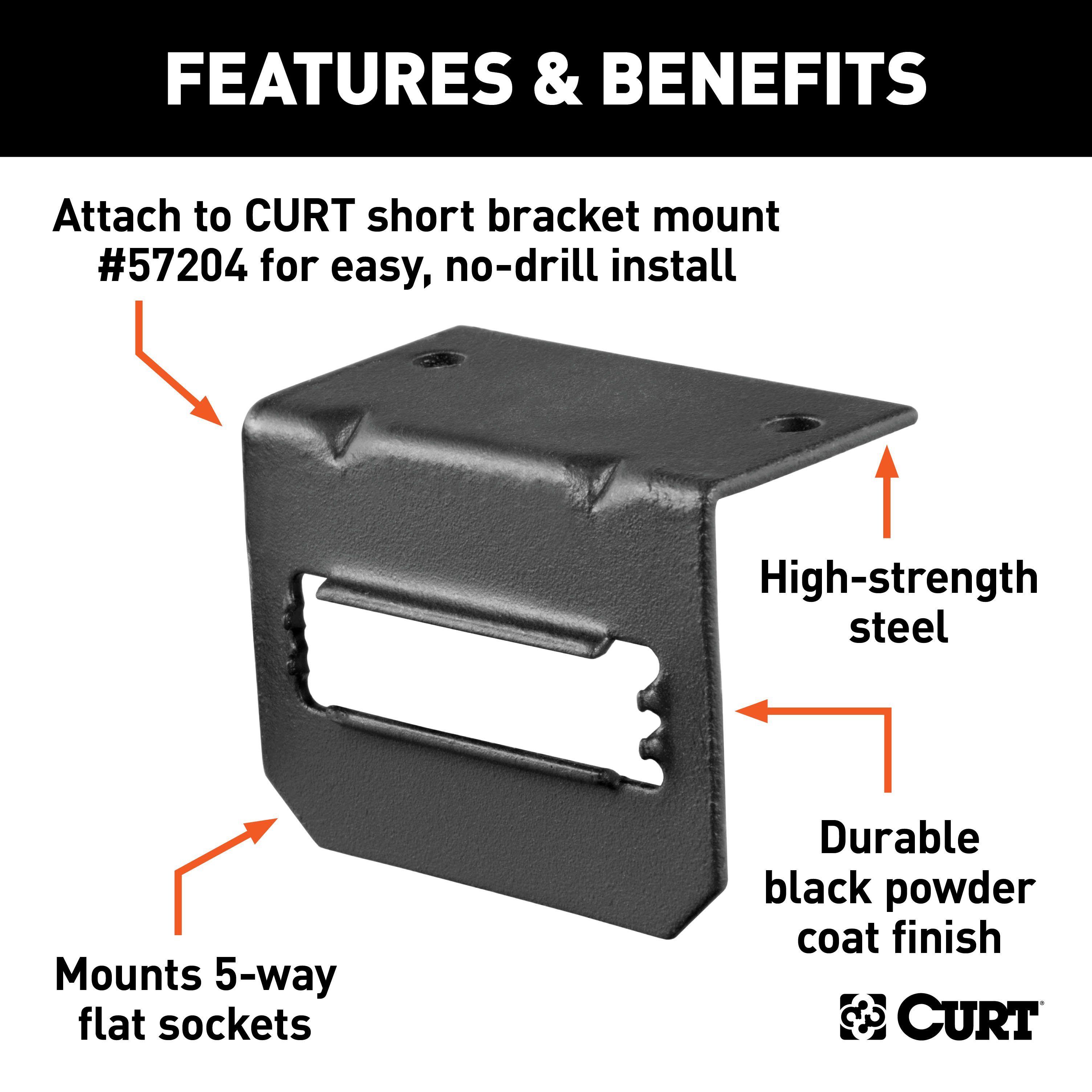
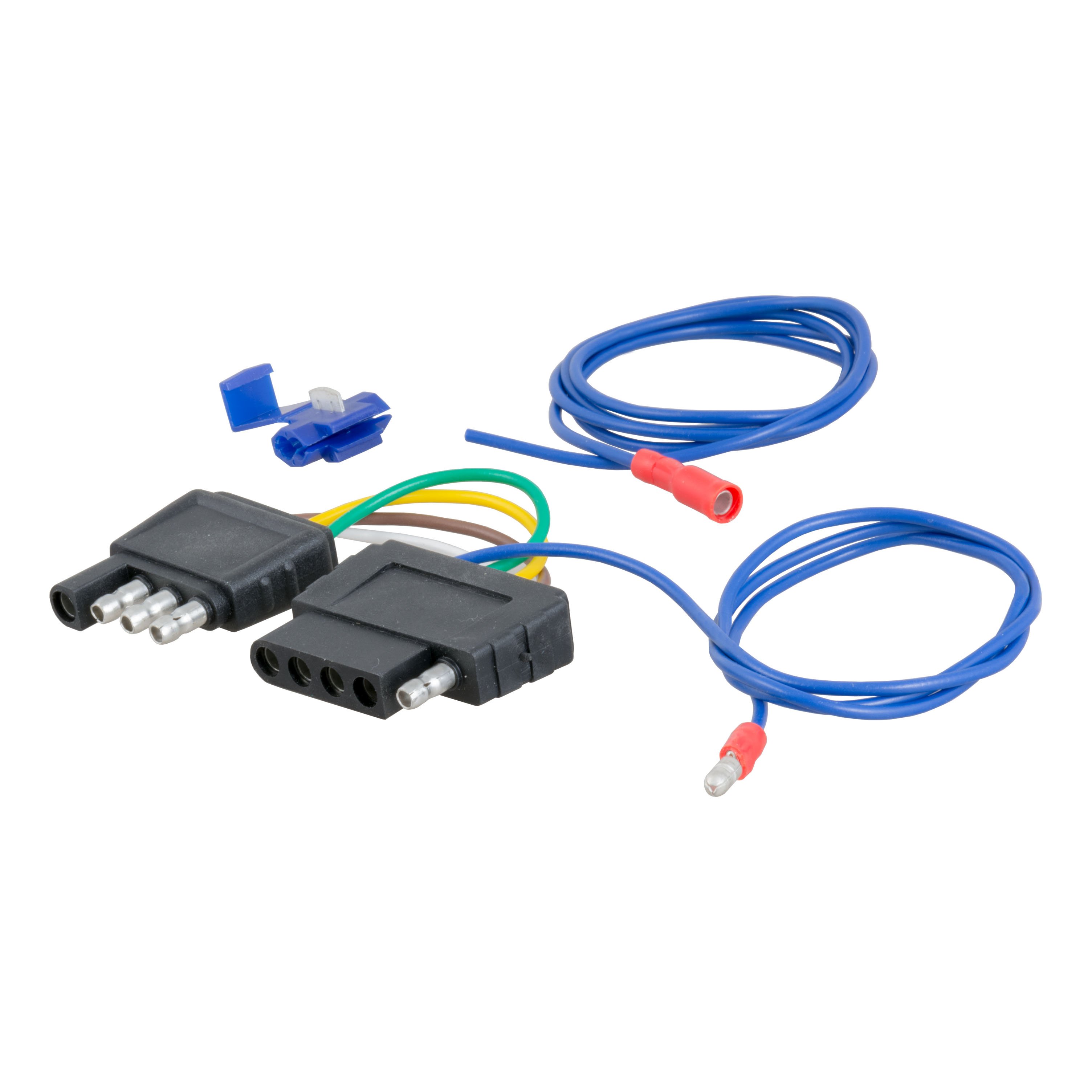
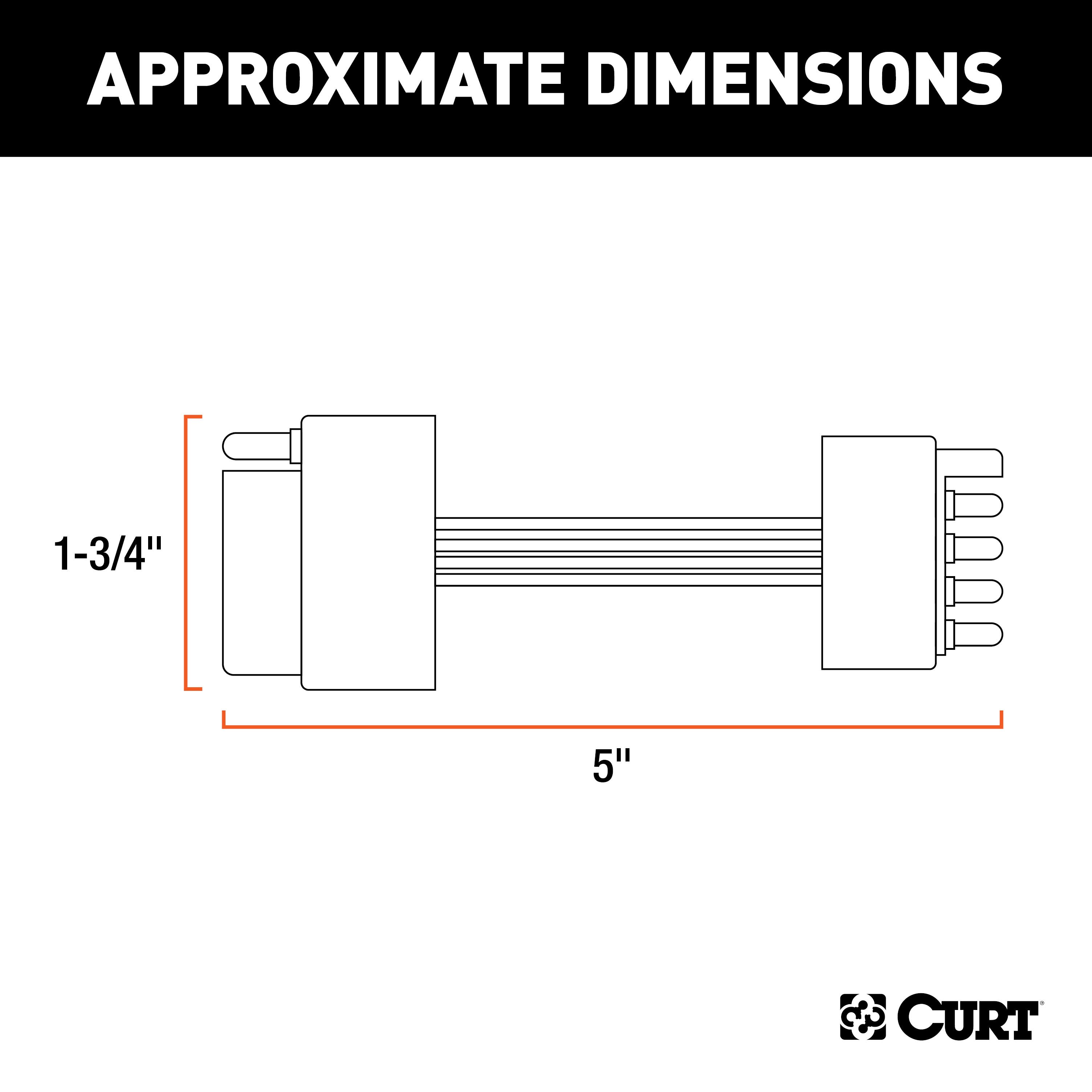
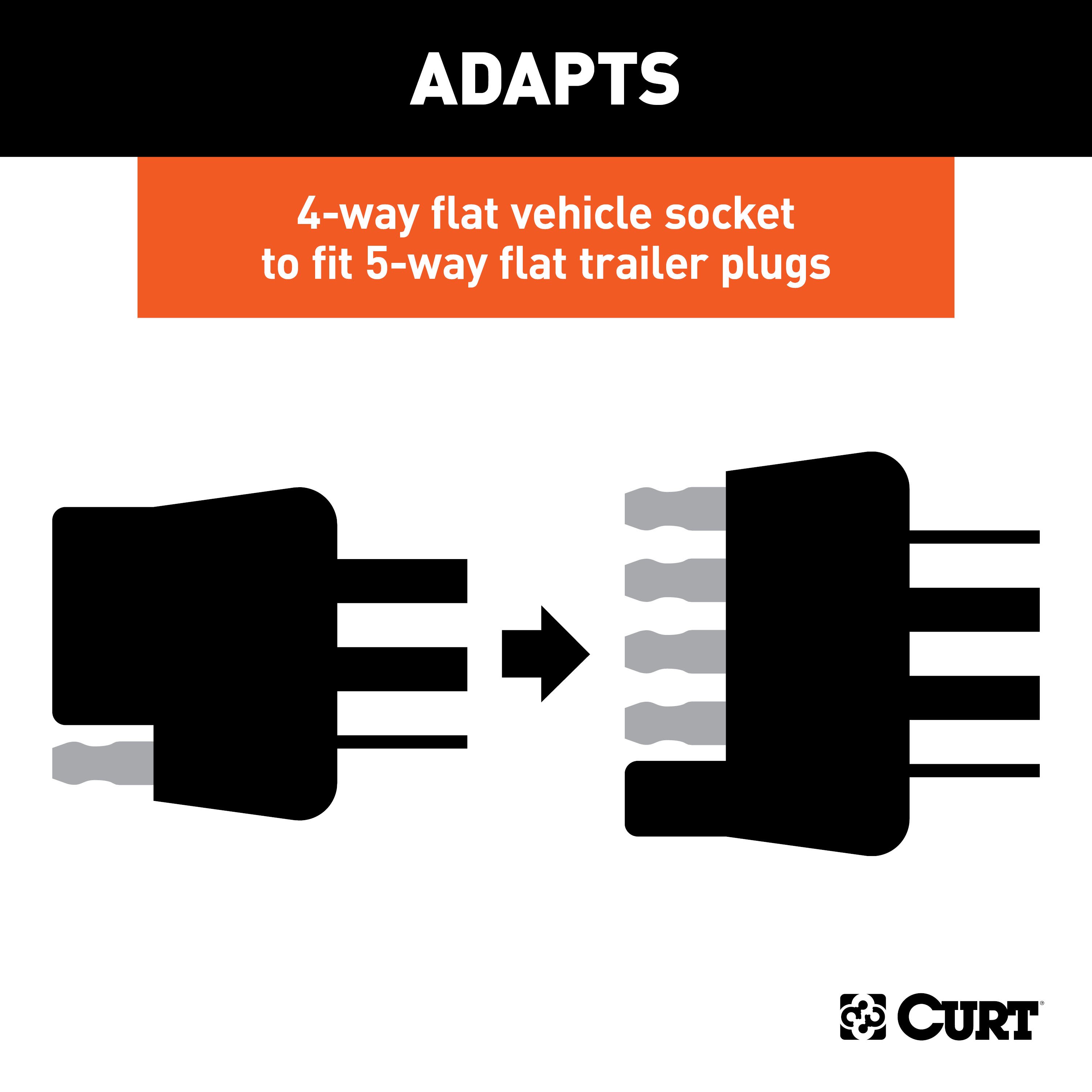
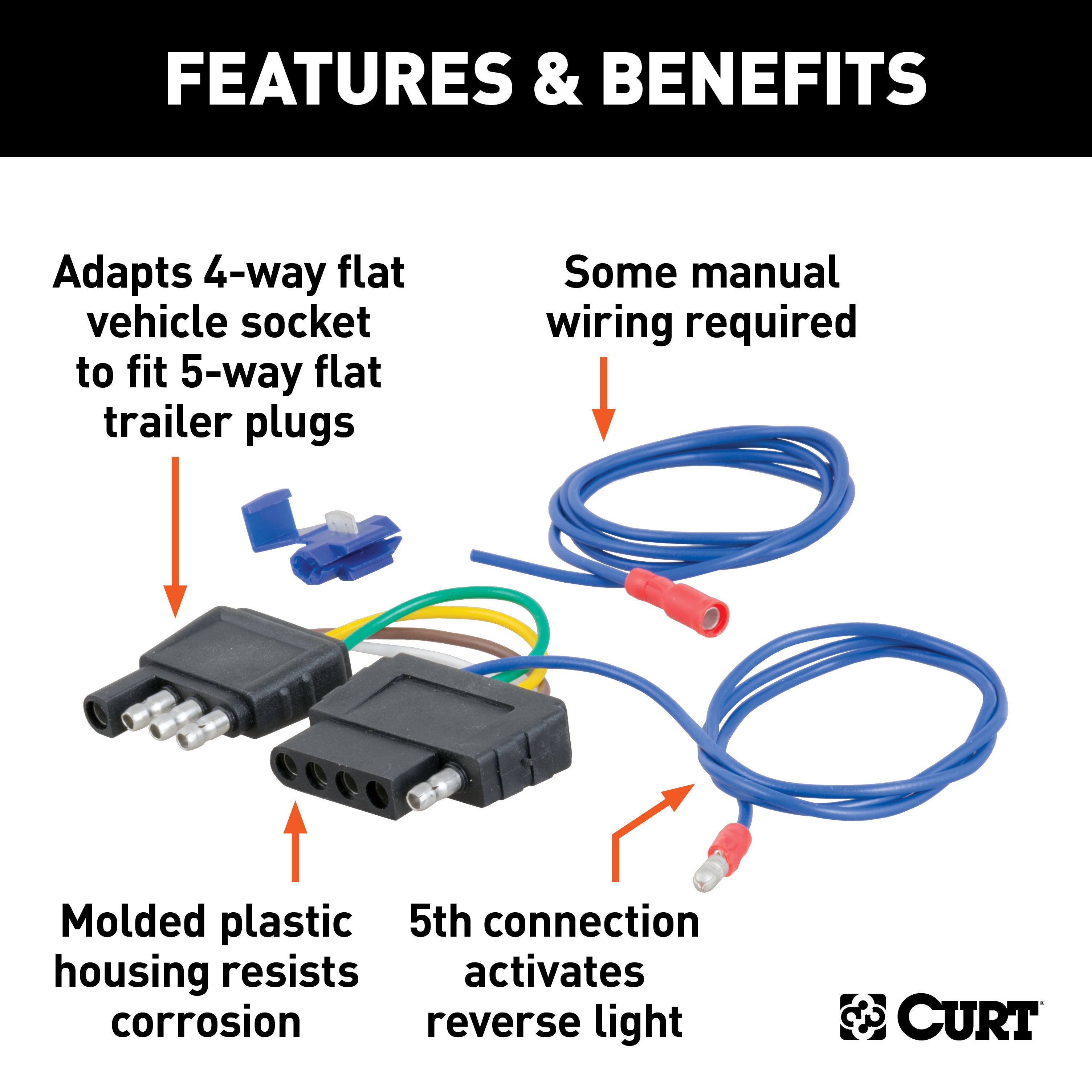
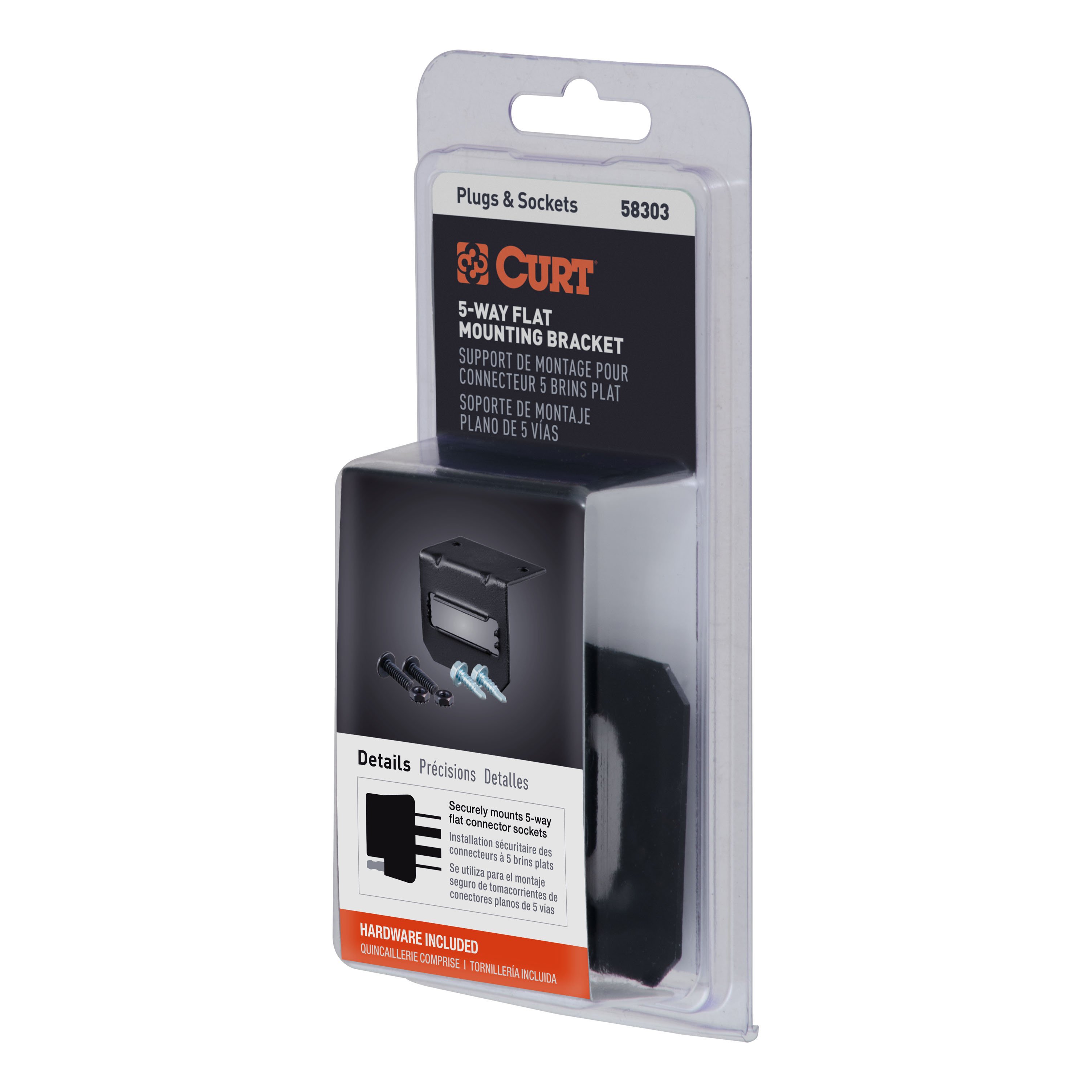
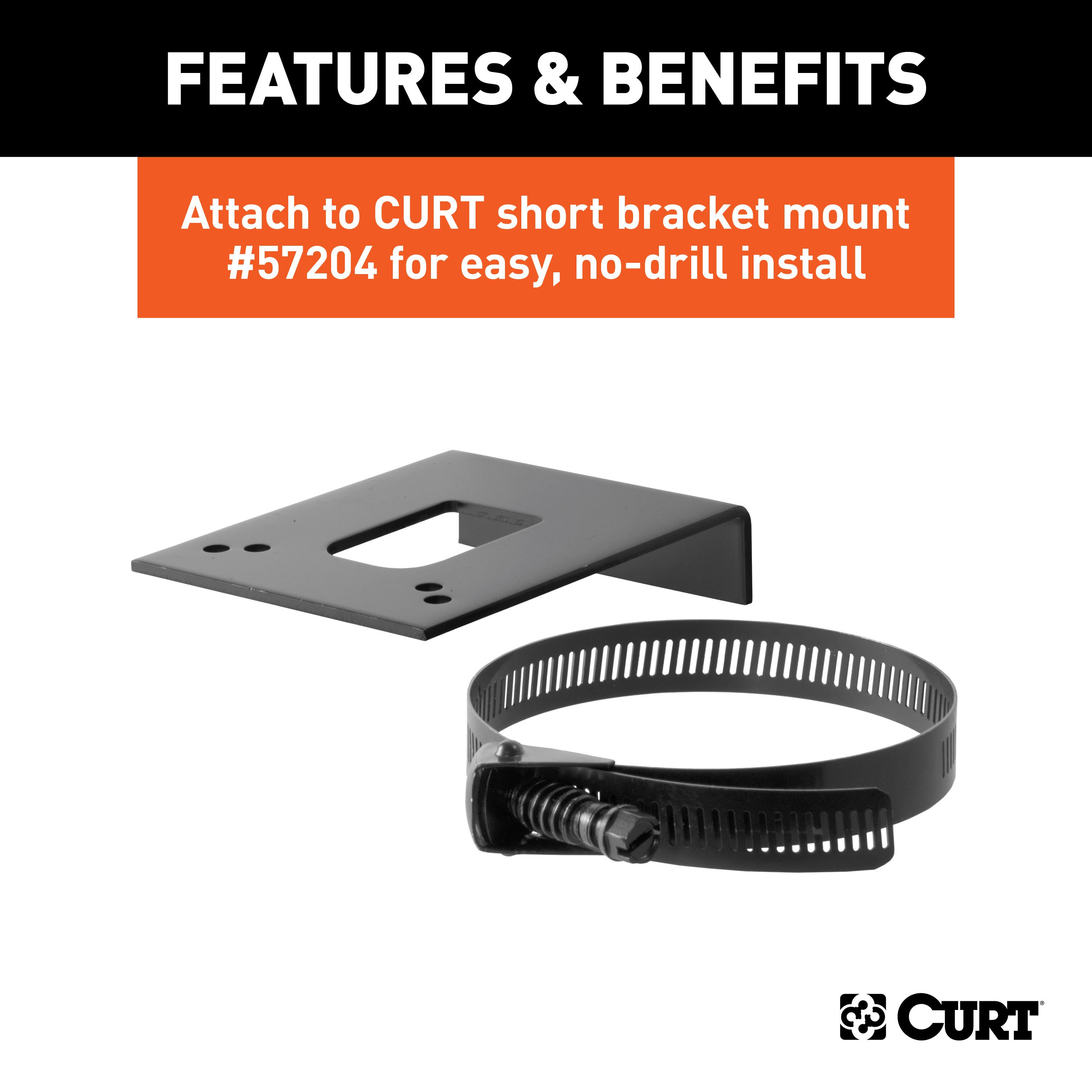
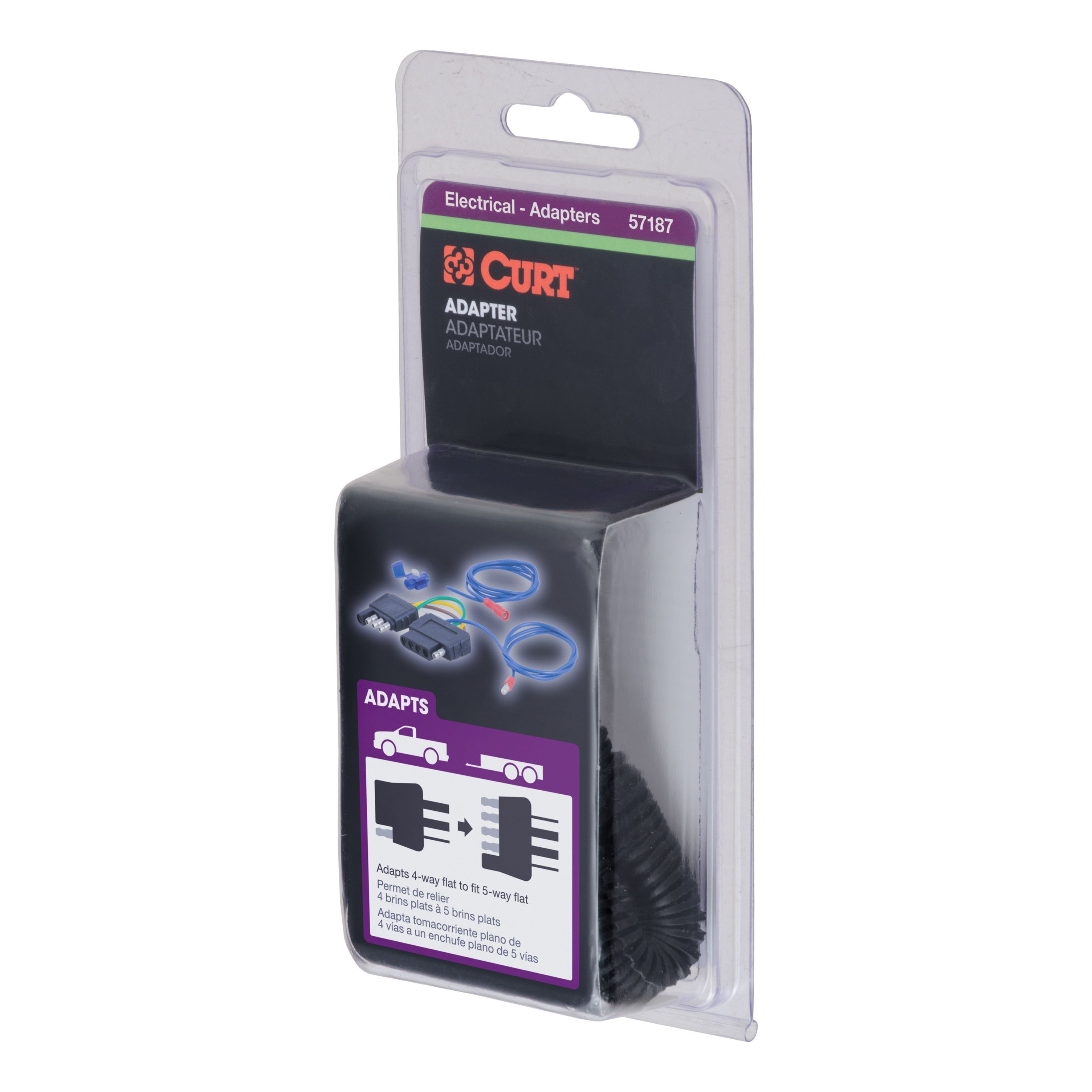
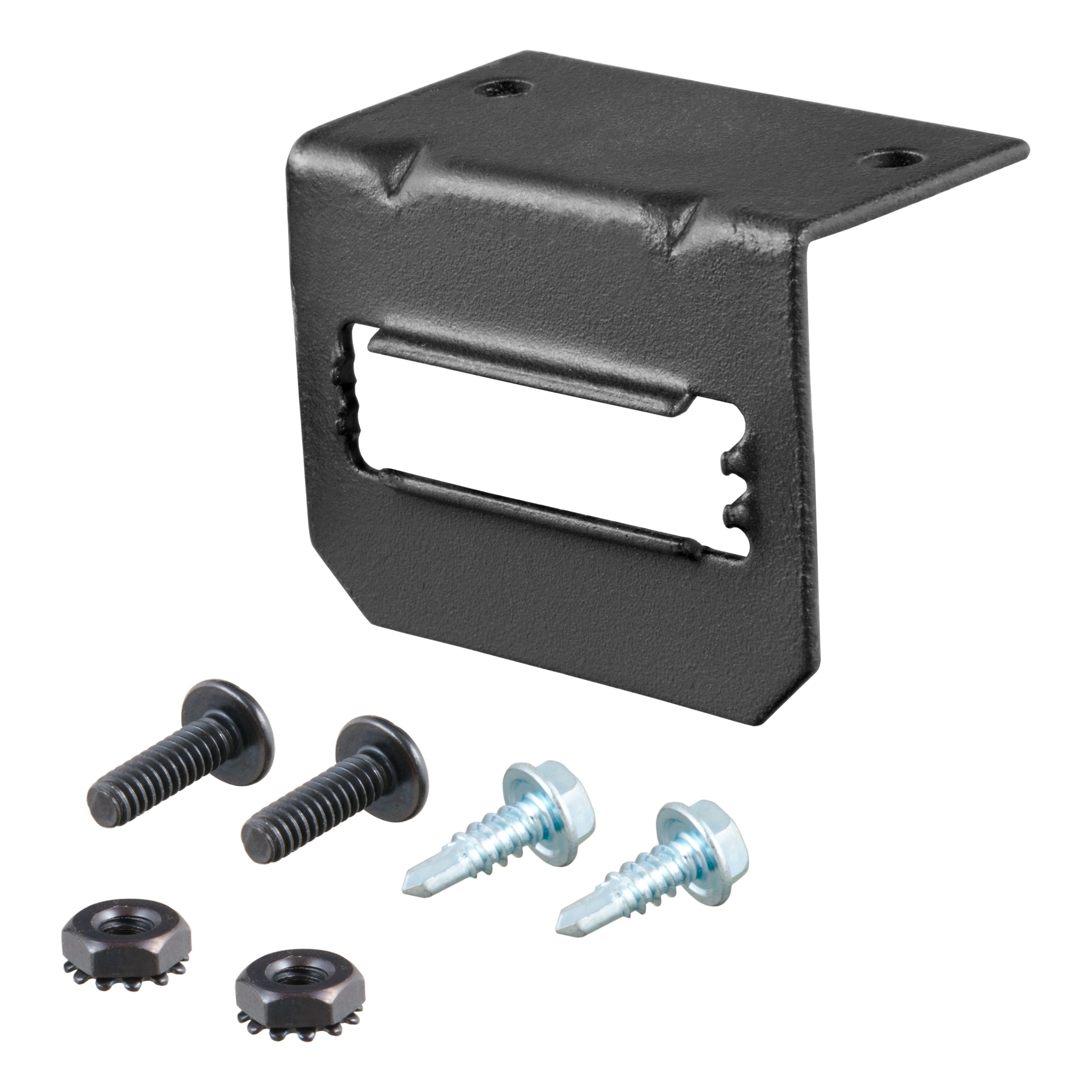
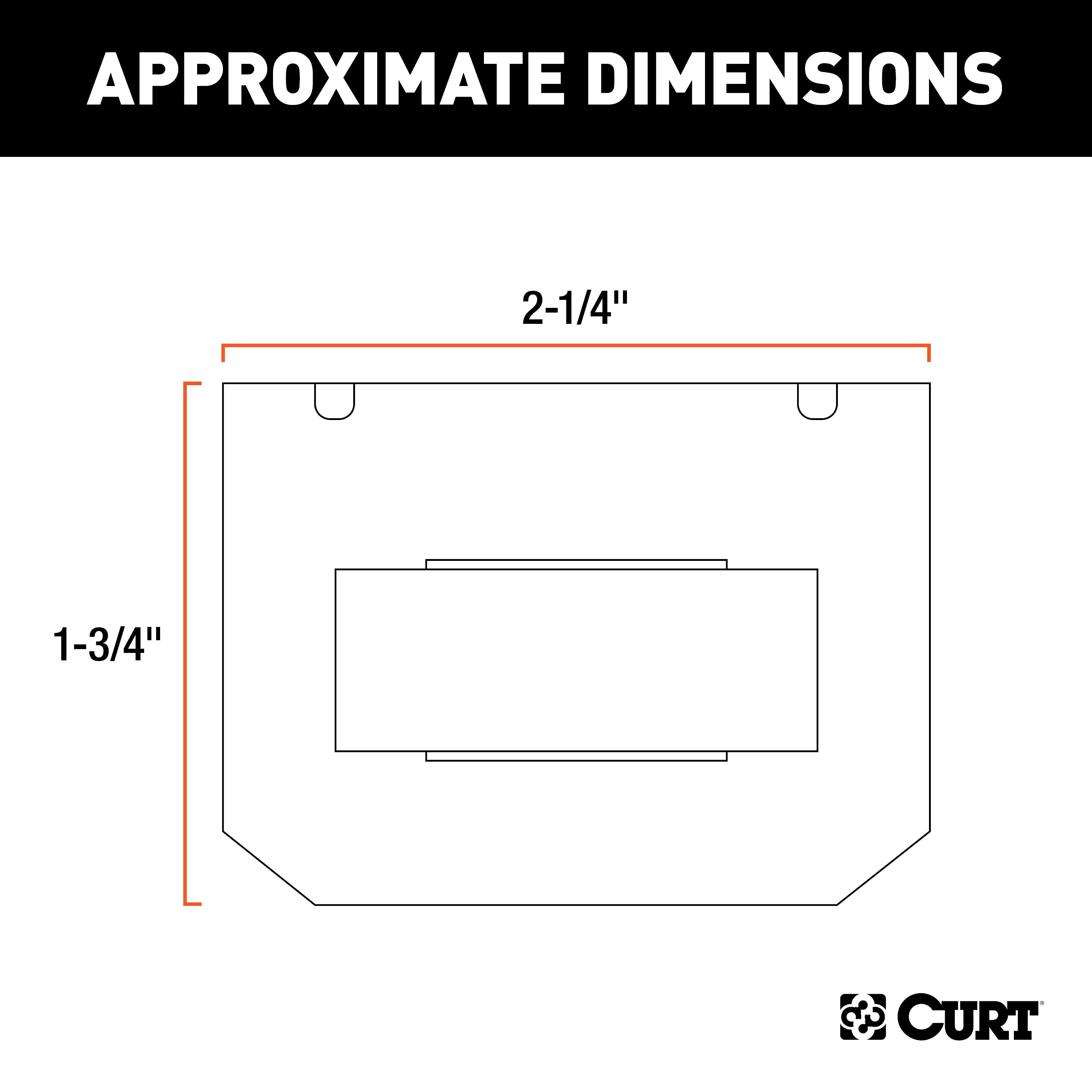
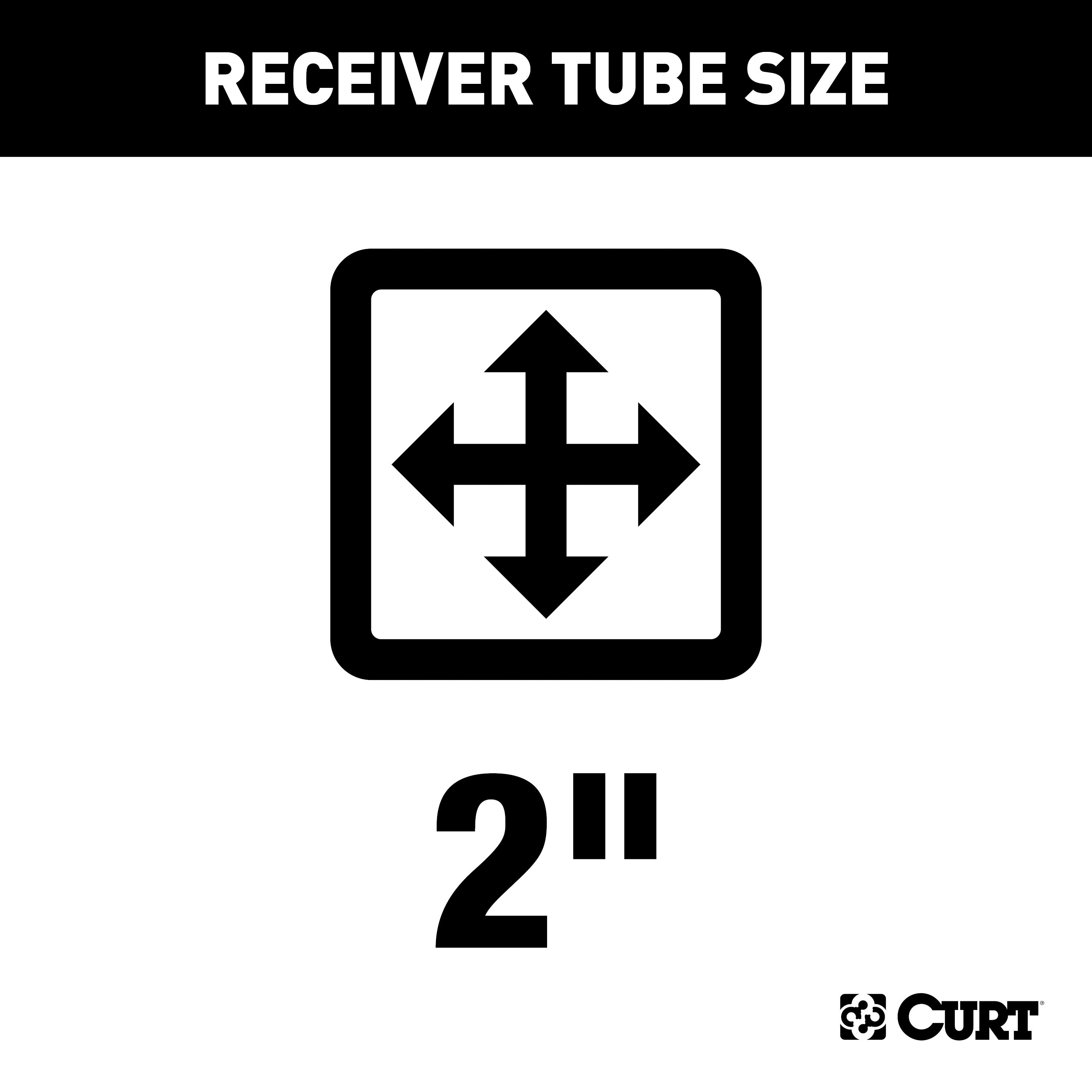
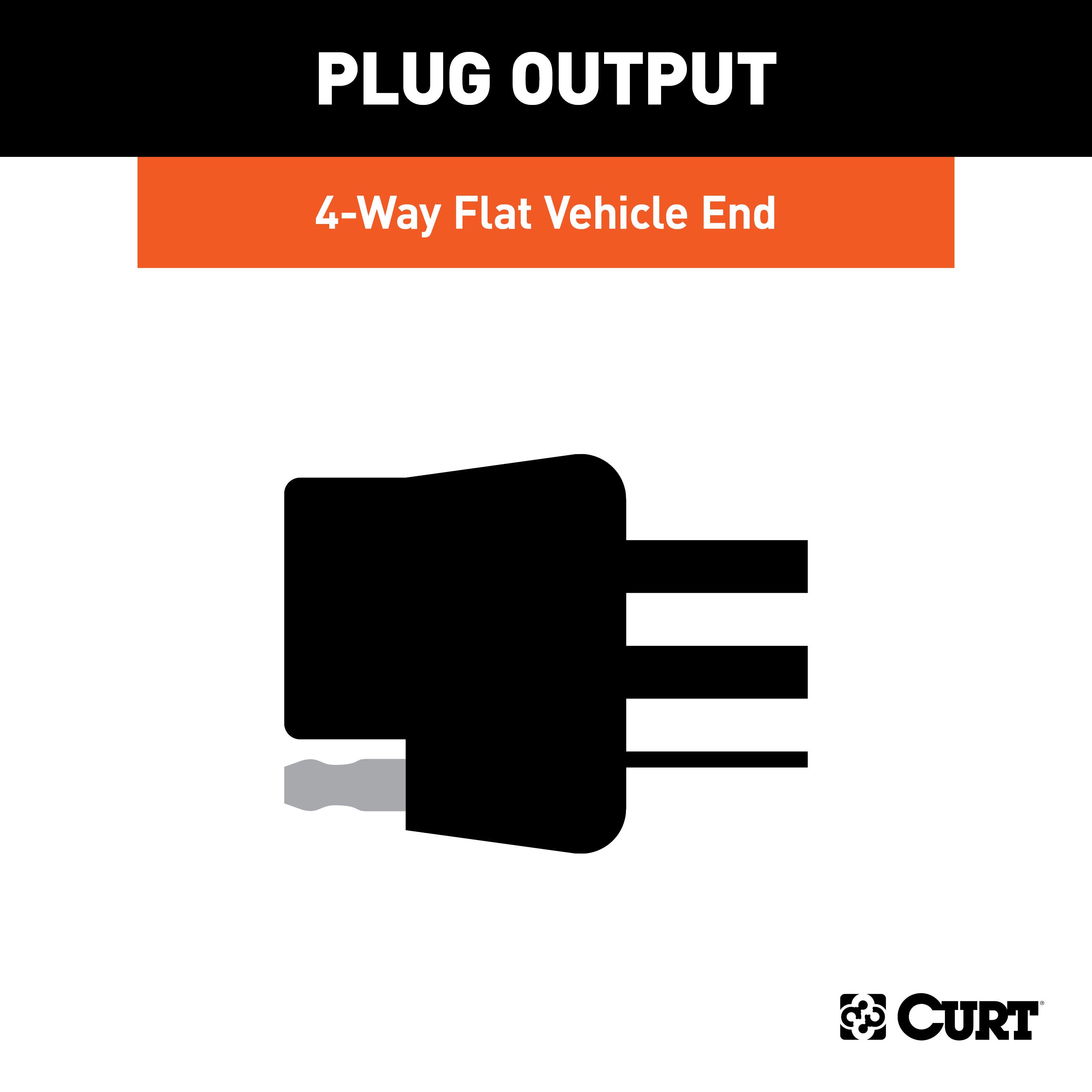
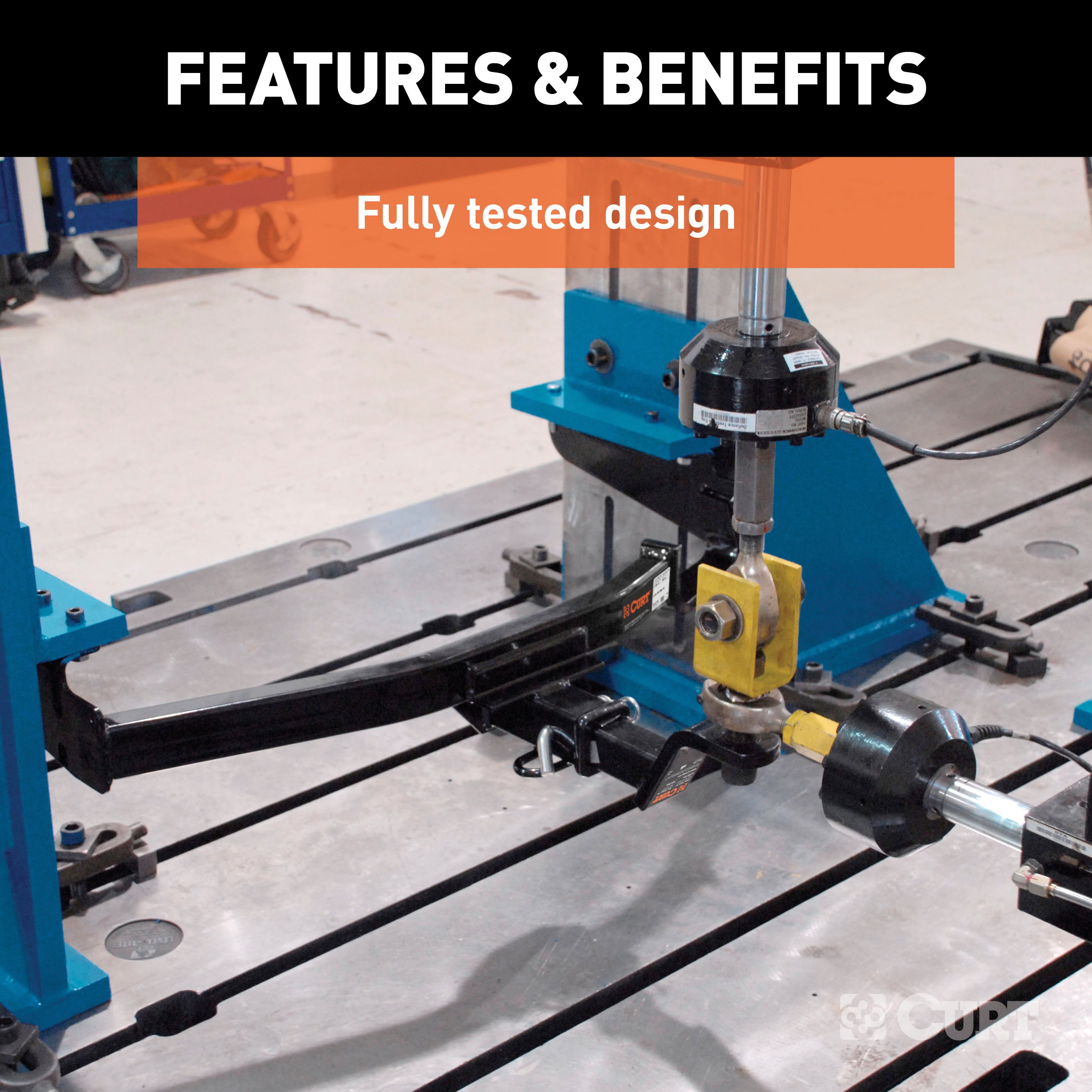
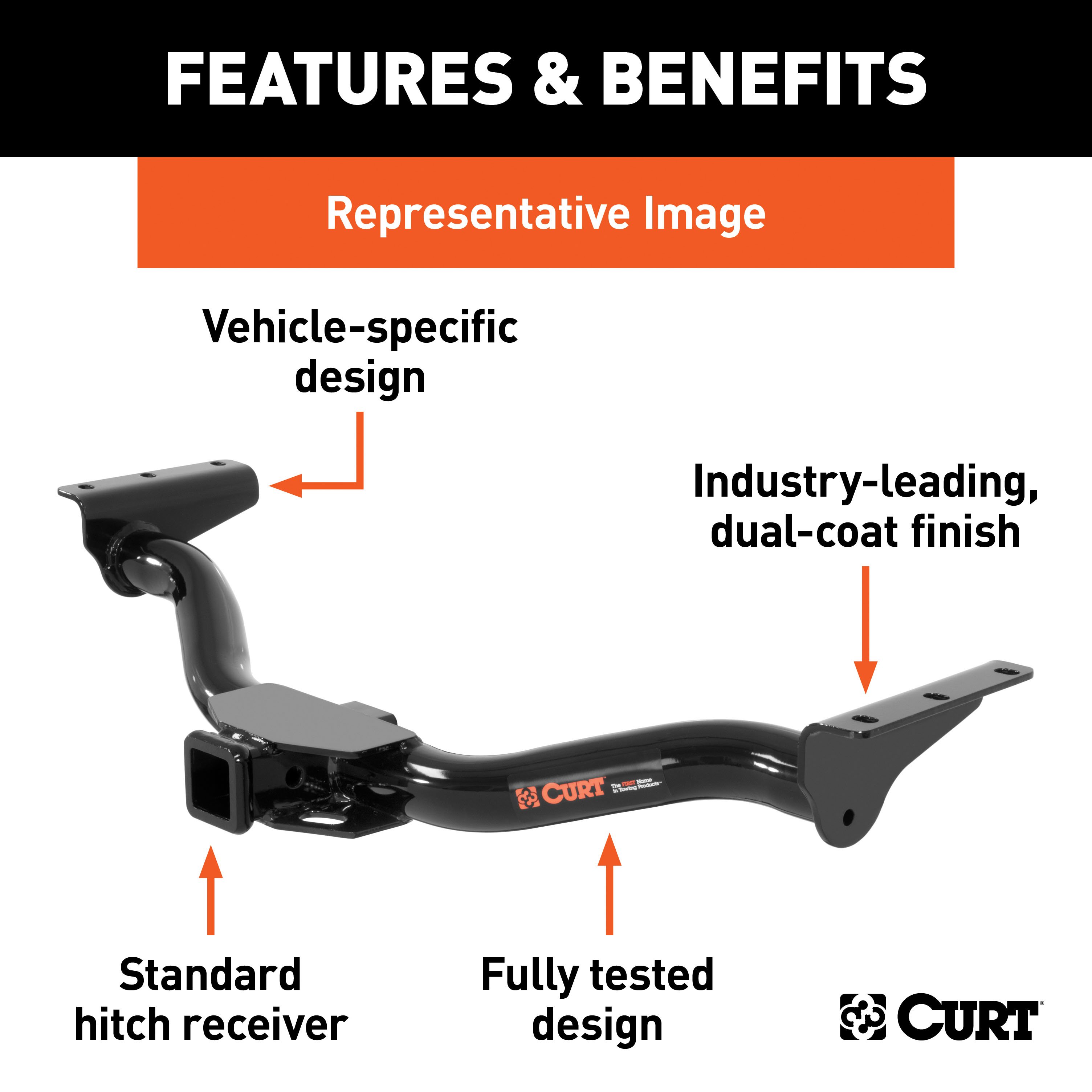

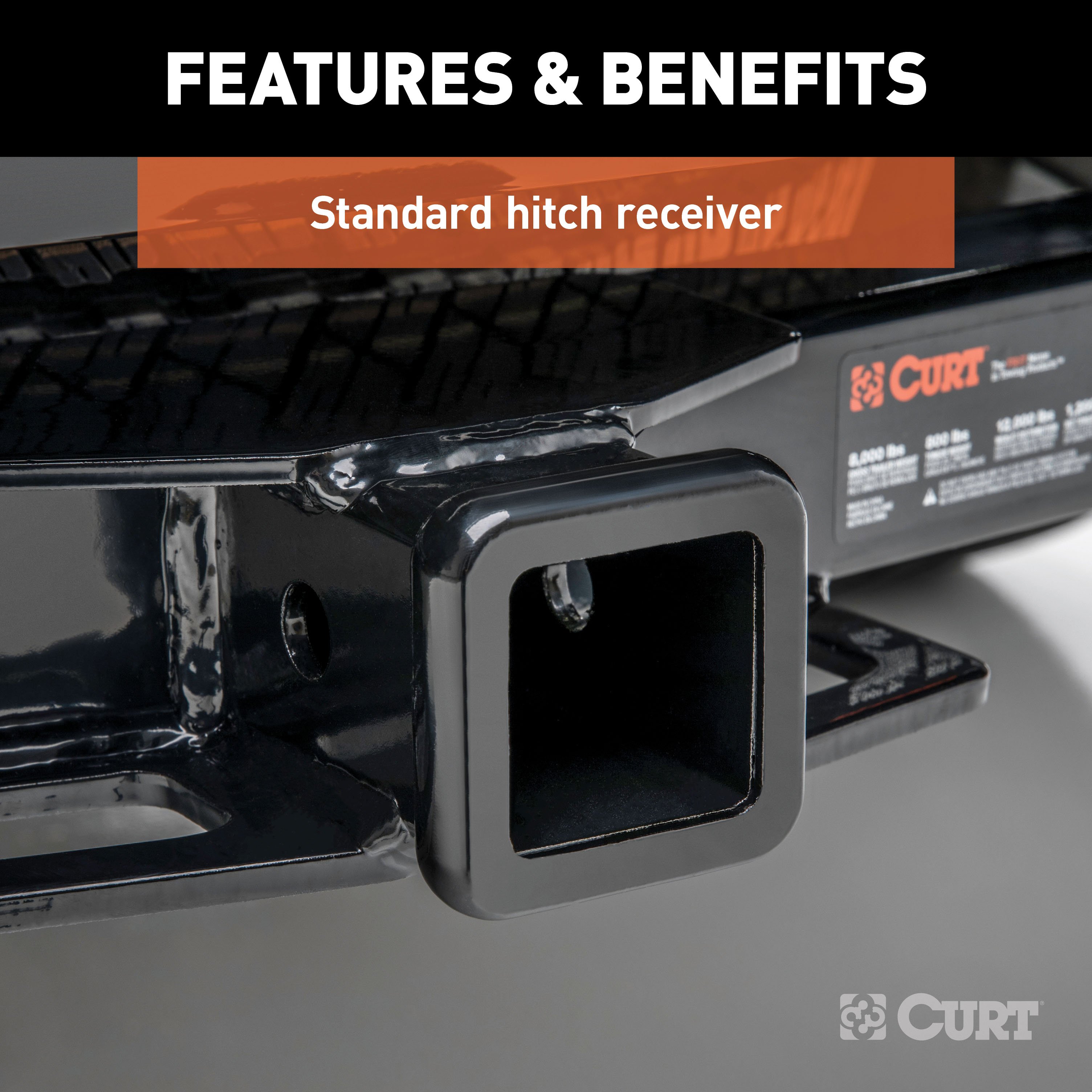

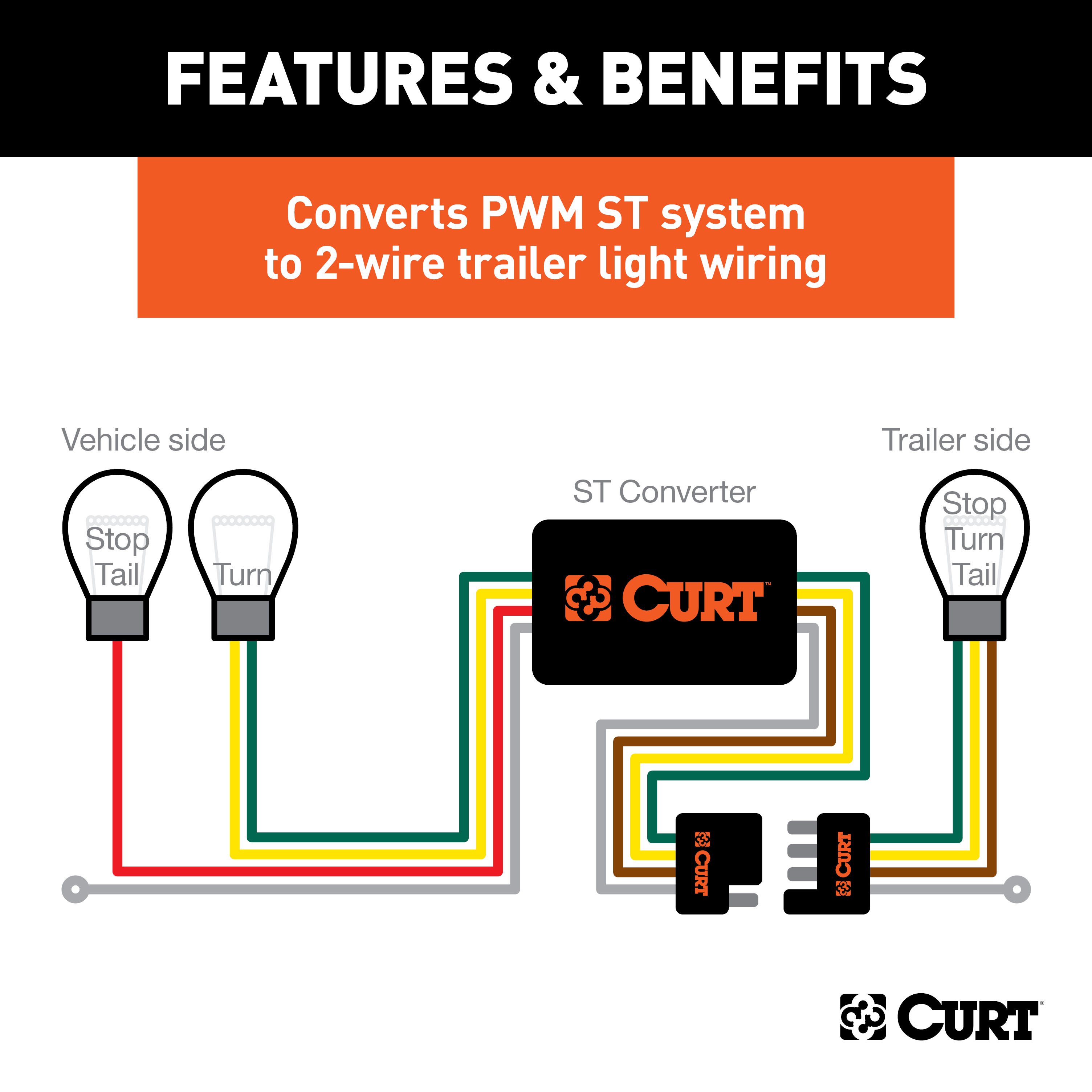
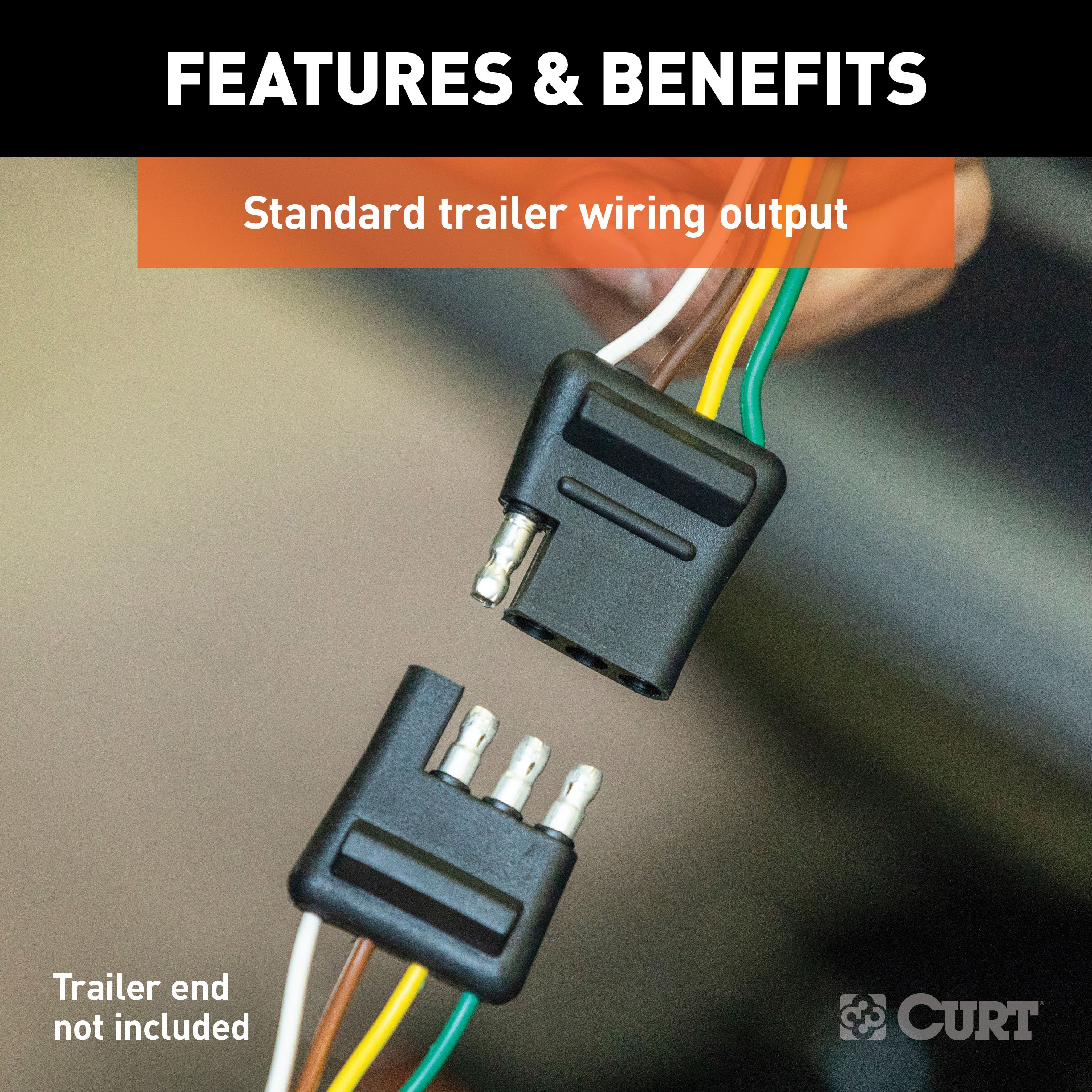
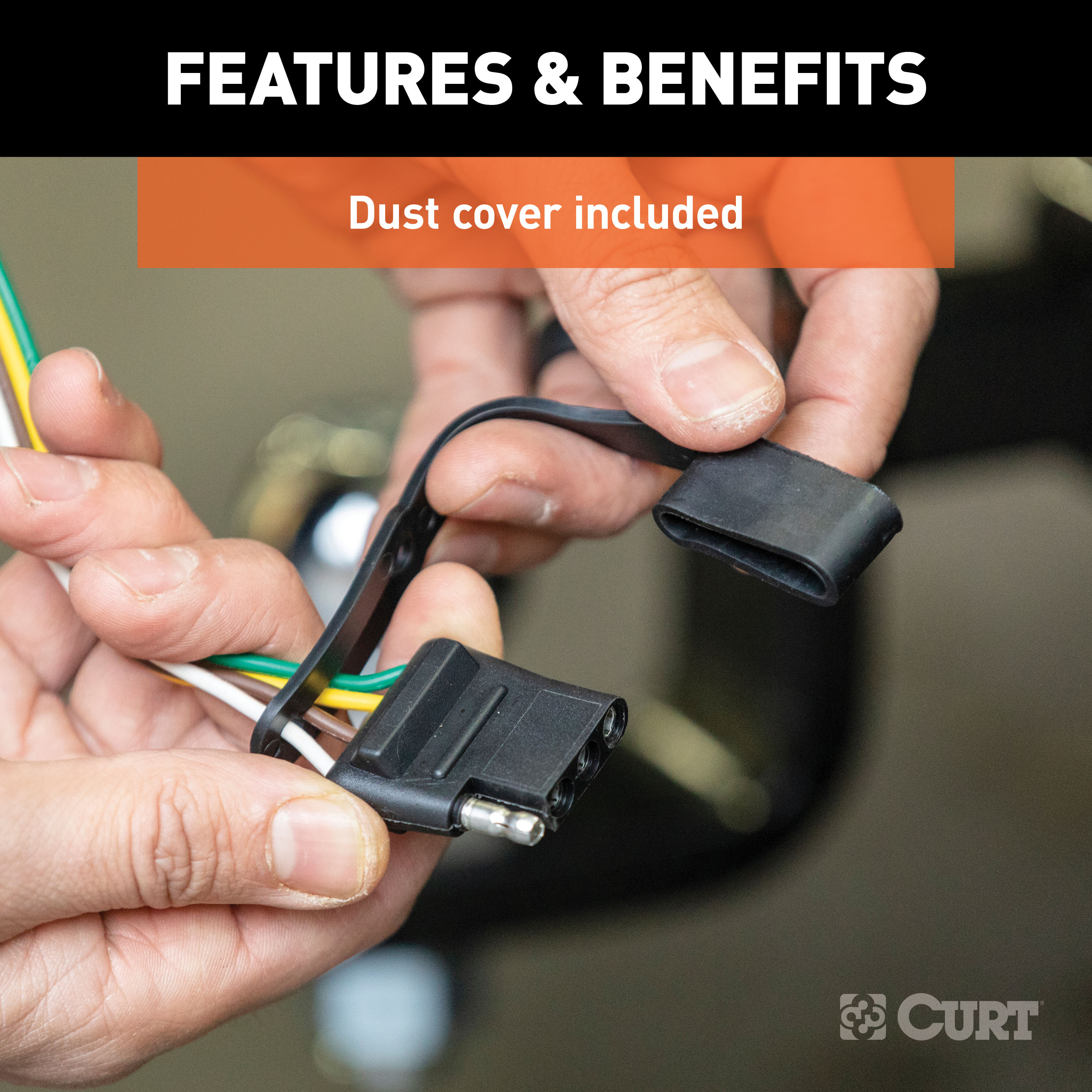
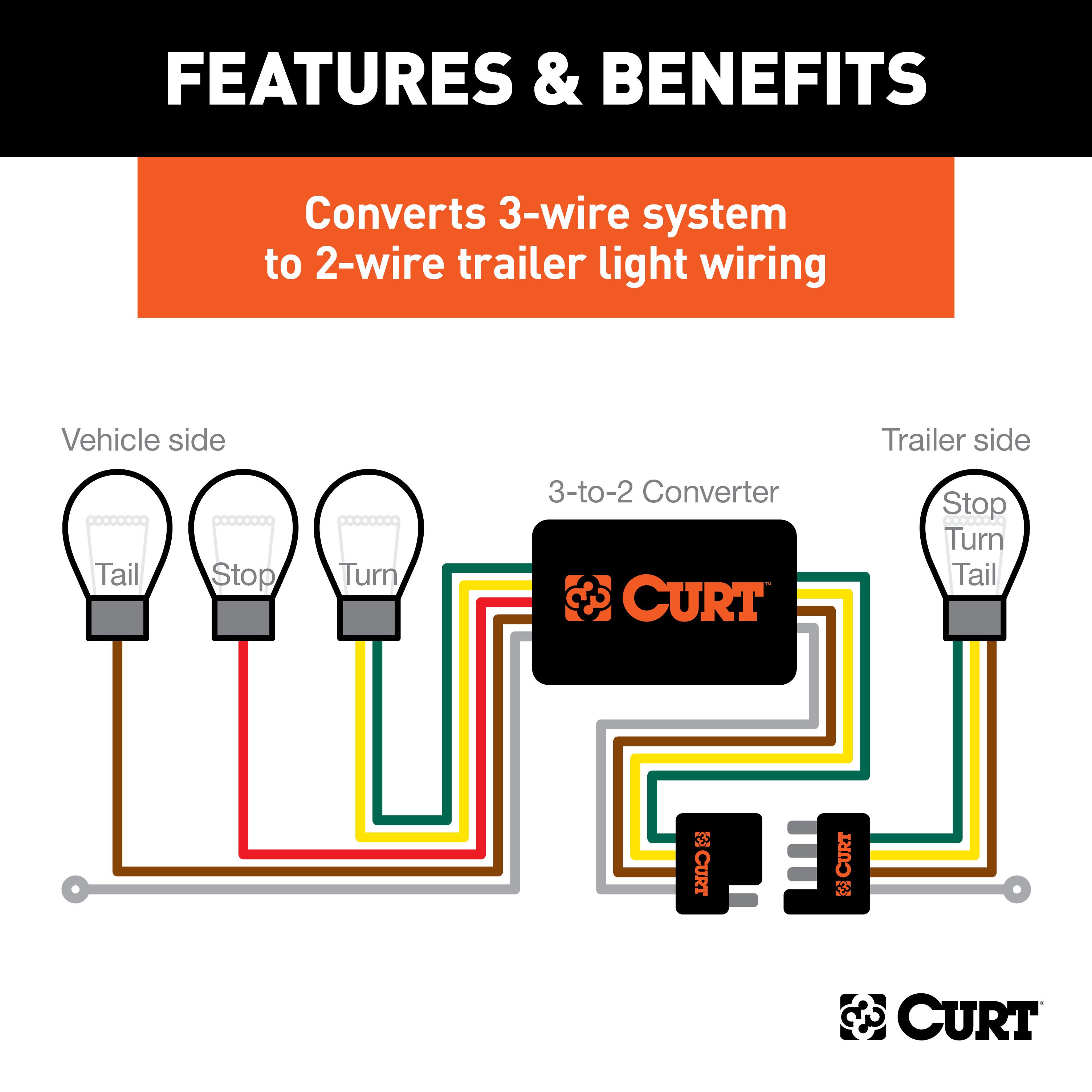
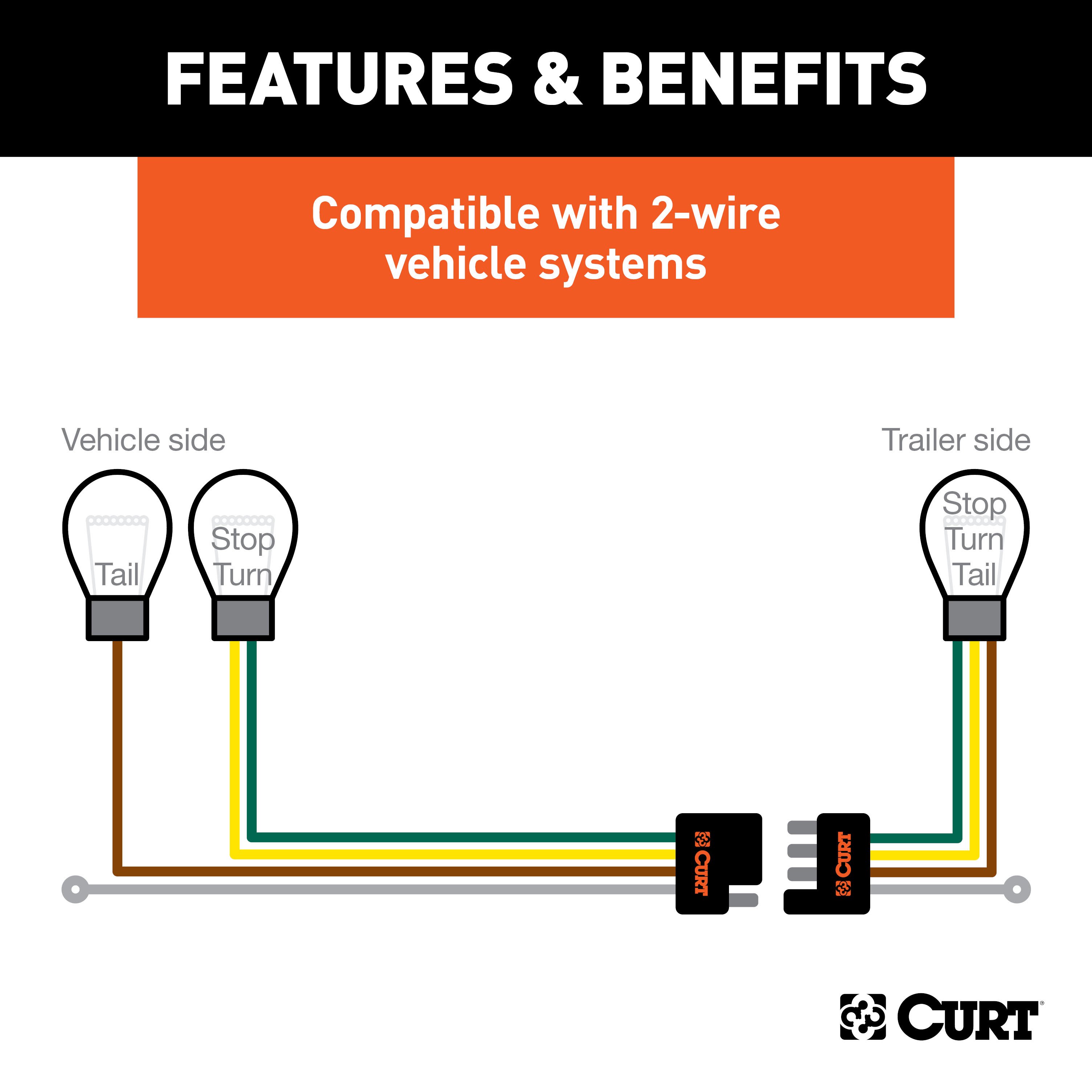
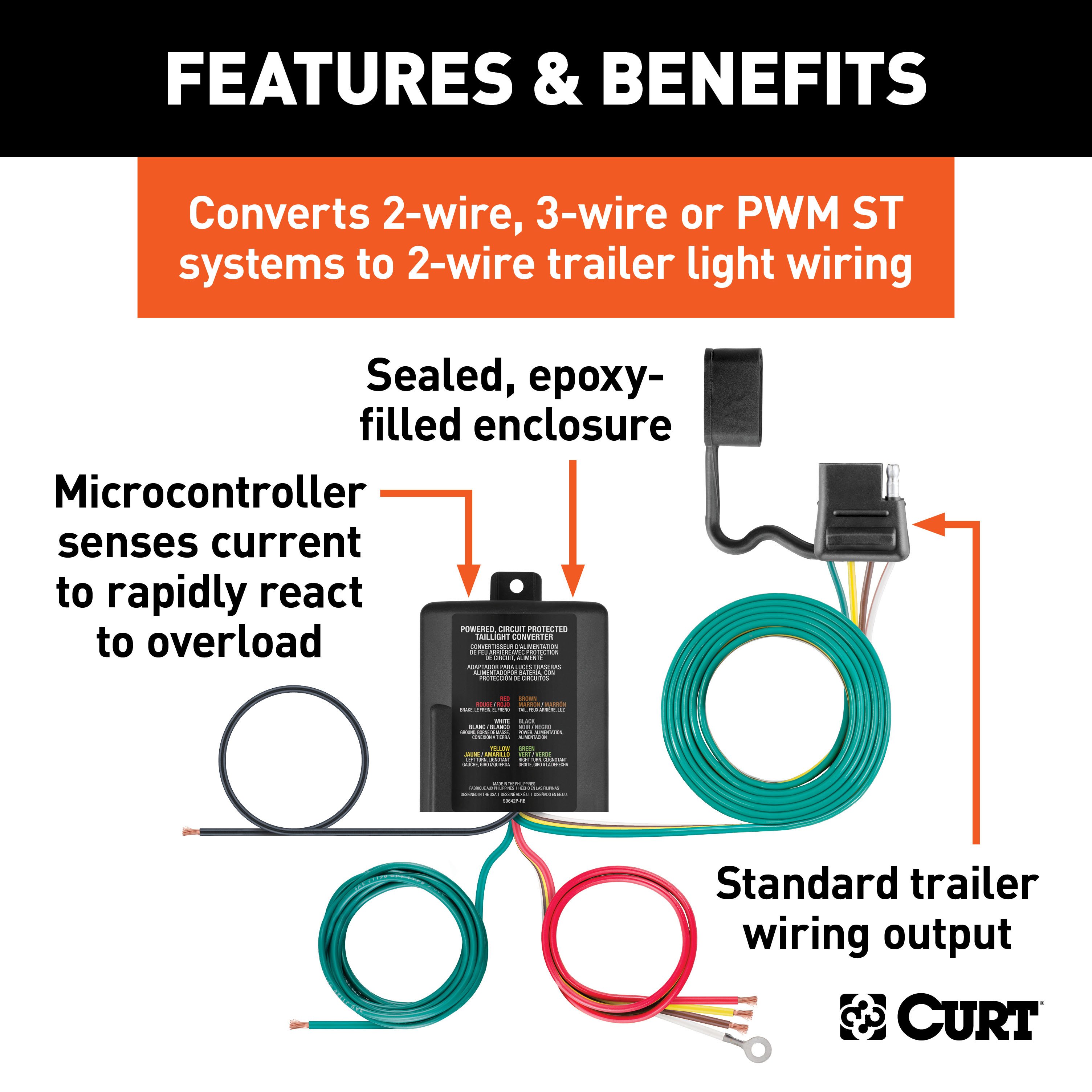
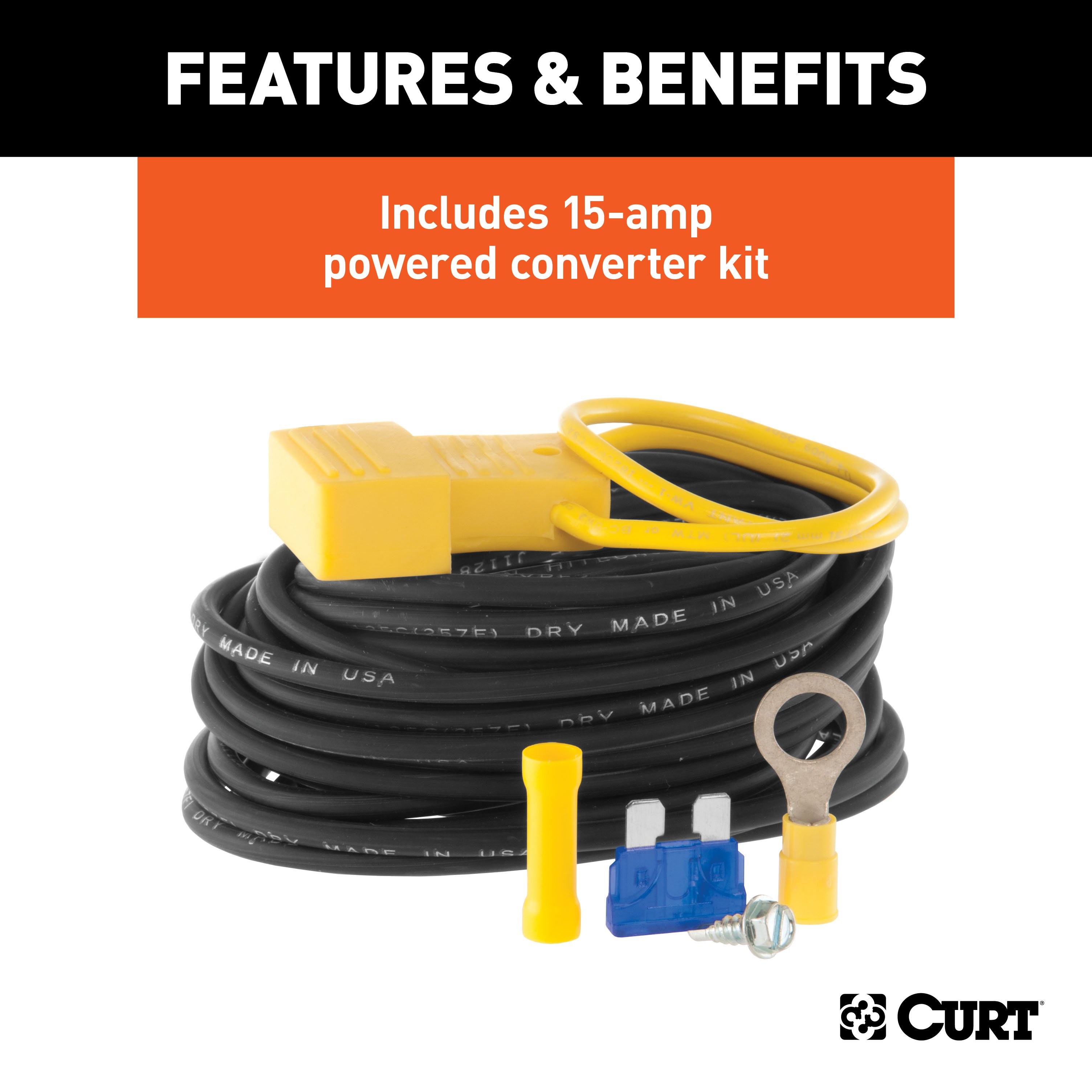
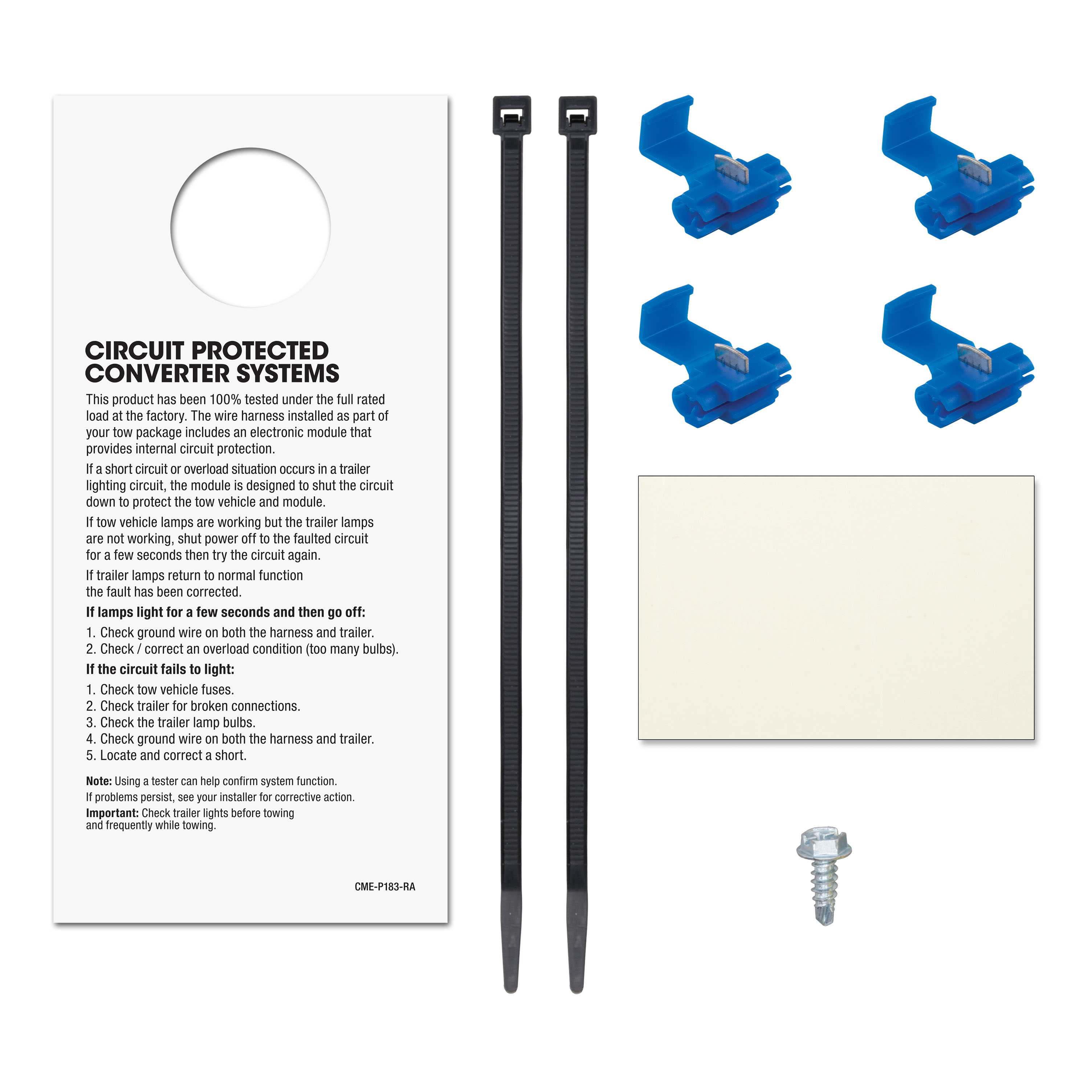
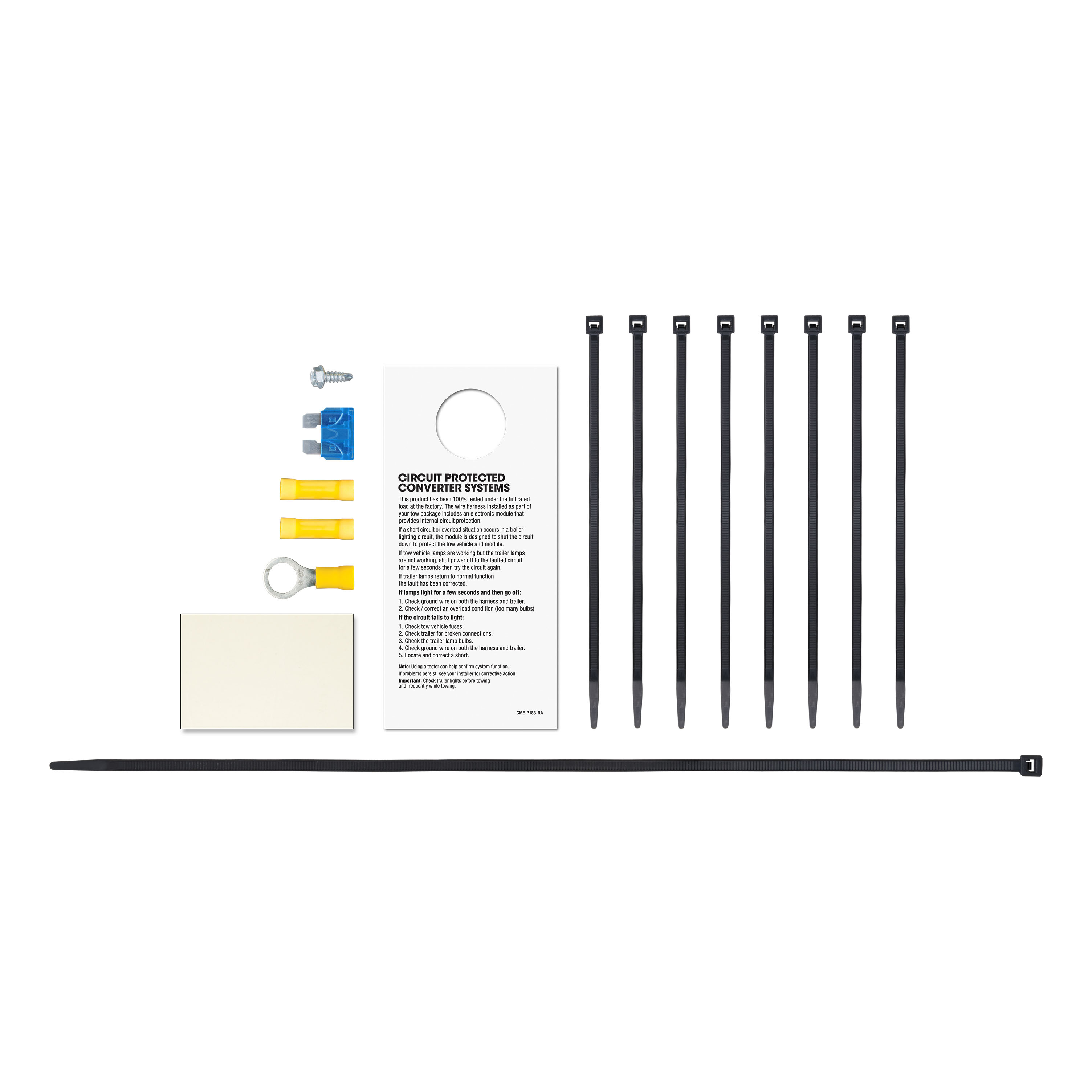




























































For 2023-2024 Lexus RX500h Trailer Hitch + Wiring 5 Pin Fits All Models Curt 13579 2 inch Tow Receiver
Model: 13579 59236 57187 58303-CH2713This Trailer Tow Hitch + 5-Flat Fits The Following Vehicles:
2023 - 2024 Lexus RX500h All Models
This Trailer Tow Hitch + 5-Flat Includes the Following Parts:
- Class 3 Trailer Hitch, 2" Receiver (Easy Bolt-On, No Drilling)
- Multi-Function Taillight Converter Kit (Requires Splicing)
- 4-Way to 5-Way Flat Install Kit for Boat Trailer Surge and Connector Mounting Bracket for 5-Way Flat
- Installation instructions, schematics, diagrams, and hardware (if required).
List of Fitment Years:
2023, 2024
CURT 13579 Class 3 Trailer Hitch, 2-Inch Receiver
Manufactured by: Curt
Whatever your task at hand -- whether it's launching that boat before daybreak, setting up your camper before the rush or getting a final load to the dump before close -- CURT class 3 trailer hitches offer the strength needed for serious towing They make it easy to hitch up and Bring It, offering a vehicle-specific fit and the weight capacity to handle a variety of trailers Custom class 3 hitches are the most common type of receiver hitch for pickup trucks and SUVs.
Because of their weight range, they are also found on full-size cars, crossovers and minivans Each custom-fit class 3 hitch package is made for vehicle-specific mounting This particular kit fits certain years of the Lexus RX350, RX350h and RX500h (see application info to verify vehicle compatibility).
It provides a weight carrying capacity of 3,500 lbs GTW and 350 lbs TW.
CURT class 3 trailer hitches are typically used to attach and haul utility trailers, boat trailers, campers, snowmobile or ATV haulers and more (NOTE: Never exceed the lowest-rated towing component) Each class 3 hitch has a 2" receiver tube and is tested in accordance with SAE J684 for safety To ensure that CURT class 3 receiver hitches have what it takes for serious trailering, they are designed using a hands-on approach and are constructed with rugged, high-strength steel and precise welding.
We also protect our class 3 hitches in a co-cured finish of liquid A-coat and black powder coat for superior resistance to rust, chipping and UV damage..
Features:
- Rated to 3,500 lbs. gross trailer weight and 350 lbs. tongue weight
- Engineered with a vehicle-specific design for a custom fit
- Concealed main body for OE look and seamless integration with the vehicle
- Tested for safety in accordance with SAE J684
- Precisely welded for superior strength and fit
- Protected by a durable high-gloss black powder coat finish
- Co-cured in a rust-resistant liquid A-coat, inside and out
- Equipped with an open-back receiver for easy cleaning
- Limited lifetime warranty (one-year finish, one-year parts)
- Made in USA (may include imported hardware)
CURT 59236 Weather-Resistant Multi-Function Splice-in Trailer Tail Light Converter Kit, 4-Pin Wiring Harness
Manufactured by: Curt
Rain, road grime and salt can deal a vicious blow to your trailer wiring, and it takes electrical components with an extra-thick shell to stand up to the elements The CURT multi-function electrical converter is an advanced taillight converter that offers the ultimate in vehicle compatibility and weather resistance, giving you a reliable wiring connection any season of the year The potted design seals the internal electrical components in a watertight enclosure and is filled with a solid compound to protect against impacts, vibrations and moisture for long-lasting use, even on the exterior of the vehicle.
The converter also features our advanced surface mount technology (SMT), using smaller components mounted directly to the surface of the circuit board This produces lower resistance, reduced heat generation, longer life cycles and higher reliability The CURT multi-function electrical converter comes with pigtail wires that are able to be spliced into two-wire, three-wire or PWM wiring system with combined stop and taillights.
It converts any of these systems to a simple two-wire system, using a standard 4-way flat output, to be compatible with most trailer wiring The converter is controlled using a microprocessor that is able to sense the current passing through it, allowing for quick reaction to dangerous conditions such as overload and short circuits It also filters unwanted input signals to protect your wiring systems and uses a mere seven volts for low-voltage operation.
The CURT multi-function taillight converter is a heavy-duty electrical converter for virtually any vehicle-trailer combination It comes with color-coded wires and an easy-to-read wiring guide, as well as a dust cover to protect the 4-way flat connector This package includes a powered converter wiring kit #55152 and four snap locks for faster, more secure splicing..
Features:
- Converts 2-wire, 3-wire or PWM ST system to 2-wire trailer light wiring
- Potted enclosure significantly increases water and vibration resistance
- 4-way flat output connects tail lights, brake lights and turn signals
- Constructed with SMT circuitry for better performance and durability
- Microcontroller senses current to rapidly react to overload
- Provides improved overload, short-circuit and thermal protection
- Low-voltage operation allows function down to seven volts
- Color-coded wires with wiring guide for easier installation
- Included wiring kit allows for a convenient connection to the vehicle battery
- Snap locks included for fast, secure splicing
- Dust cover included to keep connector clean when not in use
CURT 57187 4-Way to 5-Way Flat Adapter for Boat Trailer Surge Brakes and CURT 58303 Vehicle-Side Trailer Wiring Harness Mounting Bracket for 5-Way Flat
Manufactured by: Curt
CURT electrical connector brackets provide a simple solution for mounting wiring to your trailer hitch on the rear of your vehicle Connector wires can be a nuisance when they are just lying around; they can get tangled up with cargo and even damaged An electrical connector left to hang off the back end of your vehicle is an even greater hazard.
Secure, protect, and optimize the use of your electrical connector by mounting it with a CURT connector bracket This trailer wire connector bracket is designed to hold a 5-way flat socket It features sturdy steel construction with a black finish and can be mounted on your vehicle or trailer hitch using the included hardware.
This electrical adapter is designed to adapt a 4-way flat vehicle socket to fit a 5-way flat trailer plug It is specifically intended for boat trailers with surge brakes, adding in a fifth wire for the reverse lights and allowing your vehicle's 4-way flat to easily plug into your boat trailer 5-way flat This boat trailer wiring adapter features durable molded plastic construction and requires some splicing.
All CURT wiring and electrical products come with a one-year limited warranty to give you the assurance you need to tow with confidence..
Features:
- Adapts vehicle 4-way flat to plug into boat trailer 5-way flat
- Intended for boat trailers with surge brakes
- Fifth wire splices in to connect reverse lights
- Adapts 4-way flat vehicle socket to fit 5-way flat trailer plugs
- Durable molded plastic housing resists corrosion
- Securely mounts a 5-way flat connector socket
- Allows for attachment to the vehicle or trailer hitch
- Constructed from high-strength steel
- Protected by a durable black powder coat finish
Hitches Near Me: We operate out of several warehouses across the country, ensuring faster delivery to your location.
$367 99 $509.80 28% OFF
- Best Price on Web Guarantee
- Fastest Shipping
- FREE Shipping
- In Stock

We match lower prices from major authorized retailers for brand-new products in original packaging, provided the item is in stock. The competing seller must be an authorized, professional retail business; offers from
individuals, auctions, peer-to-peer sites, or unauthorized sellers don’t qualify. Used, refurbished, or open-box items are excluded.
Please see our full terms for details.
Verify Fitment
View products that fit your vehicle
Fits 's with the following styles:
View products that fit your vehicle
Fits 's with the following styles:
$509.80 $367 99
 Learn more
Learn more
Questions? Call our Auto Experts at (877) 869-6690
Get it now, pay later
Select installments at checkout to split your purchase into 4 interest-free payments of $ every 2 weeks.
- No fees, ever.
- No impact on your credit score.
Payment options are offered by Affirm and are subject to an eligibility check and might not be available in all states. CA Residents: Loans by Affirm Loan Services, LLC are made or arranged pursuant to a California Finance Lender license.
Installments in partnership with


Each may be shipped from a separate location, and therefore, may arrive at different times
Product Details
- Brand: Curt
- Model: 13579 59236 57187 58303-CH2713
- Includes: Class 3 Trailer Tow Hitch, Multi-Function Taillight Converter Kit, 4-Way to 5-Way Flat Adapter for Boat Trailer Surge Brakes, Connector Mounting Bracket for 5-Way Flat
Compatibility Chart
| Year Range | Make | Model | Style |
|---|
This Trailer Tow Hitch + 5-Flat Fits The Following Vehicles:
2023 - 2024 Lexus RX500h All Models
This Trailer Tow Hitch + 5-Flat Includes the Following Parts:
- Class 3 Trailer Hitch, 2" Receiver (Easy Bolt-On, No Drilling)
- Multi-Function Taillight Converter Kit (Requires Splicing)
- 4-Way to 5-Way Flat Install Kit for Boat Trailer Surge and Connector Mounting Bracket for 5-Way Flat
- Installation instructions, schematics, diagrams, and hardware (if required).
List of Fitment Years:
2023, 2024
CURT 13579 Class 3 Trailer Hitch, 2-Inch Receiver
Manufactured by: Curt
Whatever your task at hand -- whether it's launching that boat before daybreak, setting up your camper before the rush or getting a final load to the dump before close -- CURT class 3 trailer hitches offer the strength needed for serious towing They make it easy to hitch up and Bring It, offering a vehicle-specific fit and the weight capacity to handle a variety of trailers Custom class 3 hitches are the most common type of receiver hitch for pickup trucks and SUVs.
Because of their weight range, they are also found on full-size cars, crossovers and minivans Each custom-fit class 3 hitch package is made for vehicle-specific mounting This particular kit fits certain years of the Lexus RX350, RX350h and RX500h (see application info to verify vehicle compatibility).
It provides a weight carrying capacity of 3,500 lbs GTW and 350 lbs TW.
CURT class 3 trailer hitches are typically used to attach and haul utility trailers, boat trailers, campers, snowmobile or ATV haulers and more (NOTE: Never exceed the lowest-rated towing component) Each class 3 hitch has a 2" receiver tube and is tested in accordance with SAE J684 for safety To ensure that CURT class 3 receiver hitches have what it takes for serious trailering, they are designed using a hands-on approach and are constructed with rugged, high-strength steel and precise welding.
We also protect our class 3 hitches in a co-cured finish of liquid A-coat and black powder coat for superior resistance to rust, chipping and UV damage..
Features:
- Rated to 3,500 lbs. gross trailer weight and 350 lbs. tongue weight
- Engineered with a vehicle-specific design for a custom fit
- Concealed main body for OE look and seamless integration with the vehicle
- Tested for safety in accordance with SAE J684
- Precisely welded for superior strength and fit
- Protected by a durable high-gloss black powder coat finish
- Co-cured in a rust-resistant liquid A-coat, inside and out
- Equipped with an open-back receiver for easy cleaning
- Limited lifetime warranty (one-year finish, one-year parts)
- Made in USA (may include imported hardware)
CURT 59236 Weather-Resistant Multi-Function Splice-in Trailer Tail Light Converter Kit, 4-Pin Wiring Harness
Manufactured by: Curt
Rain, road grime and salt can deal a vicious blow to your trailer wiring, and it takes electrical components with an extra-thick shell to stand up to the elements The CURT multi-function electrical converter is an advanced taillight converter that offers the ultimate in vehicle compatibility and weather resistance, giving you a reliable wiring connection any season of the year The potted design seals the internal electrical components in a watertight enclosure and is filled with a solid compound to protect against impacts, vibrations and moisture for long-lasting use, even on the exterior of the vehicle.
The converter also features our advanced surface mount technology (SMT), using smaller components mounted directly to the surface of the circuit board This produces lower resistance, reduced heat generation, longer life cycles and higher reliability The CURT multi-function electrical converter comes with pigtail wires that are able to be spliced into two-wire, three-wire or PWM wiring system with combined stop and taillights.
It converts any of these systems to a simple two-wire system, using a standard 4-way flat output, to be compatible with most trailer wiring The converter is controlled using a microprocessor that is able to sense the current passing through it, allowing for quick reaction to dangerous conditions such as overload and short circuits It also filters unwanted input signals to protect your wiring systems and uses a mere seven volts for low-voltage operation.
The CURT multi-function taillight converter is a heavy-duty electrical converter for virtually any vehicle-trailer combination It comes with color-coded wires and an easy-to-read wiring guide, as well as a dust cover to protect the 4-way flat connector This package includes a powered converter wiring kit #55152 and four snap locks for faster, more secure splicing..
Features:
- Converts 2-wire, 3-wire or PWM ST system to 2-wire trailer light wiring
- Potted enclosure significantly increases water and vibration resistance
- 4-way flat output connects tail lights, brake lights and turn signals
- Constructed with SMT circuitry for better performance and durability
- Microcontroller senses current to rapidly react to overload
- Provides improved overload, short-circuit and thermal protection
- Low-voltage operation allows function down to seven volts
- Color-coded wires with wiring guide for easier installation
- Included wiring kit allows for a convenient connection to the vehicle battery
- Snap locks included for fast, secure splicing
- Dust cover included to keep connector clean when not in use
CURT 57187 4-Way to 5-Way Flat Adapter for Boat Trailer Surge Brakes and CURT 58303 Vehicle-Side Trailer Wiring Harness Mounting Bracket for 5-Way Flat
Manufactured by: Curt
CURT electrical connector brackets provide a simple solution for mounting wiring to your trailer hitch on the rear of your vehicle Connector wires can be a nuisance when they are just lying around; they can get tangled up with cargo and even damaged An electrical connector left to hang off the back end of your vehicle is an even greater hazard.
Secure, protect, and optimize the use of your electrical connector by mounting it with a CURT connector bracket This trailer wire connector bracket is designed to hold a 5-way flat socket It features sturdy steel construction with a black finish and can be mounted on your vehicle or trailer hitch using the included hardware.
This electrical adapter is designed to adapt a 4-way flat vehicle socket to fit a 5-way flat trailer plug It is specifically intended for boat trailers with surge brakes, adding in a fifth wire for the reverse lights and allowing your vehicle's 4-way flat to easily plug into your boat trailer 5-way flat This boat trailer wiring adapter features durable molded plastic construction and requires some splicing.
All CURT wiring and electrical products come with a one-year limited warranty to give you the assurance you need to tow with confidence..
Features:
- Adapts vehicle 4-way flat to plug into boat trailer 5-way flat
- Intended for boat trailers with surge brakes
- Fifth wire splices in to connect reverse lights
- Adapts 4-way flat vehicle socket to fit 5-way flat trailer plugs
- Durable molded plastic housing resists corrosion
- Securely mounts a 5-way flat connector socket
- Allows for attachment to the vehicle or trailer hitch
- Constructed from high-strength steel
- Protected by a durable black powder coat finish
Hitches Near Me: We operate out of several warehouses across the country, ensuring faster delivery to your location.
| Default | |
| Brand | Curt |
| Gross Towing Weight | 3,500 LB |
| Includes | 5-Flat Mounting Bracket |
| Trailer Hitch Receiver Size | 2 Inch |
| Connector Design | Plug and Lead |
| Hitch Class | 3 |
| Drilling Required | No |
| Lead Length | 5 Inch |
| Tongue Weight Capacity | 350 LB |
| Gross Towing Weight w/ Weight Distribution Kit | Not Capable |
| Maximum Tongue Weight w/ Weight Distribution Kit | Not Capable |
| Hitch Visibility | Concealed |
| Cross-Tube Type | Square Tube |
| Trailer Wiring Output | Dual 5 Flat + 4 Flat |
| Install Style | Hardwire |
Ask a Question about For 2023-2024 Lexus RX500h Trailer Hitch + Wiring 5 Pin Fits All Models Curt 13579 2 inch Tow Receiver
Be the first to ask a question.
























































































